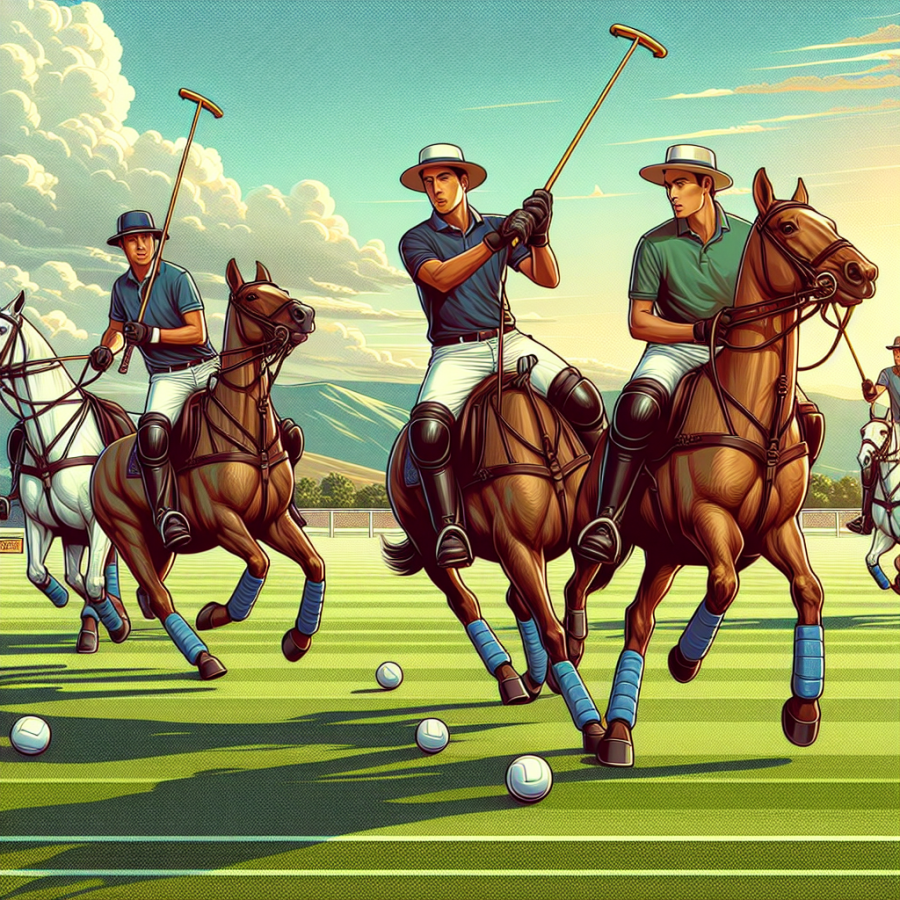Modern Innovations and Advances: The Evolution of Polo in Today's World
The influence of modern trends and technological advancements has not left the sport of polo untouched. This timeless, royal sport has adapted remarkably well to the evolving landscape, merging tradition with innovation.
One notable innovation that has evolved polo is the development of helmets with updated safety standards. Previously, helmets were not commonly worn in polo. Nowadays, it is mandatory across most polo organizations. Polo helmets now are designed with integral face guards, padded interior, and fiberglass reinforcement, providing increased protection for the players.
Another vastly appreciated innovation in modern polo is the enhancement in turf technology. Traditionally played on grass, polo fields were susceptible to weather changes, causing games to be canceled because of rain-soaked pitches. With the introduction of all-weather synthetic turfs, games can now proceed regardless of the weather conditions. This modern turf also reduces the risk of injury to the riders and horses, making the game safer.
3D printing technology has also made its mark on the polo field. Polo equipment like riding boots, mallets, and saddles have been revolutionized. 3D printing allows the customization of equipment to the specific requirements of a player, which enhances the performance and contributes to injury prevention.
Moreover, the rise of polo tourism is another result of the advent of the modern world. Eminent clubs around the world are hosting international polo events, drawing wealthy tourists and fans of the sport. This is contributing significantly to the burgeoning luxury travel sector.
In training practices, too, innovations have made a notable difference. Virtual Reality (VR) technology, for example, is being utilized to enhance training sessions. Players can now engage in practice matches or specific drills virtually. This not only equipped them with better techniques but also allows them to train without the risk of injury or fear of wearing out horses unnecessarily.
Furthermore, live streaming and broadcasting rights have brought polo into the homes of millions of fans worldwide, increasing its visibility and popularity. Online platforms and mobile applications also allow enthusiasts to follow live matches, get player details, and view tournament schedules, making the sport more accessible.
Lastly, the use of drones has transformed the way polo matches are filmed and observed. These devices provide aerial views of the field, offering broadcasters and coaches an opportunity to analyze games from a whole new perspective.
Driven by these innovations and adaptability, polo has not only managed to uphold its majestic heritage but has also stayed relevant and exciting in today's world.
Read also:
Unleashing Your Strength: A Comprehensive Guide to Powerlifting
Tracing the Ages: A Journey Through Polo's Storied Past
Tracing the history of the sport of polo takes us to ancient civilizations where it was more than just a game; it was a military training exercise, a display of skill and strategy, and an affirmation of nobility, grace and camarity.
Polo, often called "the sport of kings," is believed to have originated in Persia (now Iran) around 6th century B.C. The game primarily served as a comprehensive training tool for the Persian elite cavalry units, meant to provide exercise and to hone horse and rider's skill and partnership in battle. Some of the oldest notable accounts include instances of Alexander the Great's soldiers playing polo and Persian literature references to polo games played by nobility.
From Persia, polo spread across the realms of the Byzantine Empire and later on to the Mongols who carried it to China and India. The game gradually morphed into a spectator sport, fuelled by the passion of royalty for this new game. In China during the Tang Dynasty (618-907), Emperor Xuanzong established polo as an elite leisure activity within his massive royal court.
In the 19th century, British military men stationed in Manipur, India, chanced upon this regal sport. Fascinated by its swift pace, the British reshaped the game into its modern form, including codified rules and a uniform field size. The sport quickly gained popularity among the British nobility and was exported back to England where it was glamorized and played in grandeur events.
The game of polo made an impressive entrance into the American arena in the 1870s. It was James Gordon Bennett Jr., a New Yorker, influenced by the British who brought polo to the United States. The game took root in New York and spread across the mavens of high-society America, leading to the establishment of the United States Polo Association in 1890.
The boisterous 1920s signified the golden age of polo, with international contests drawing glamorous crowds and extensive media coverage. Polo prowess even became a symbol of national pride. However, the Great Depression and World War II led to a decline in popularity, largely attributed to a contraction of high-society wealth.
Notwithstanding, the past few decades have seen a resurgence in the sport. From Argentina to Dubai, polo has once again claimed its relevance among the equestrian crowd and continues to captivate new enthusiasts worldwide. Technological advancements have also played their part in the modern evolution of polo.




